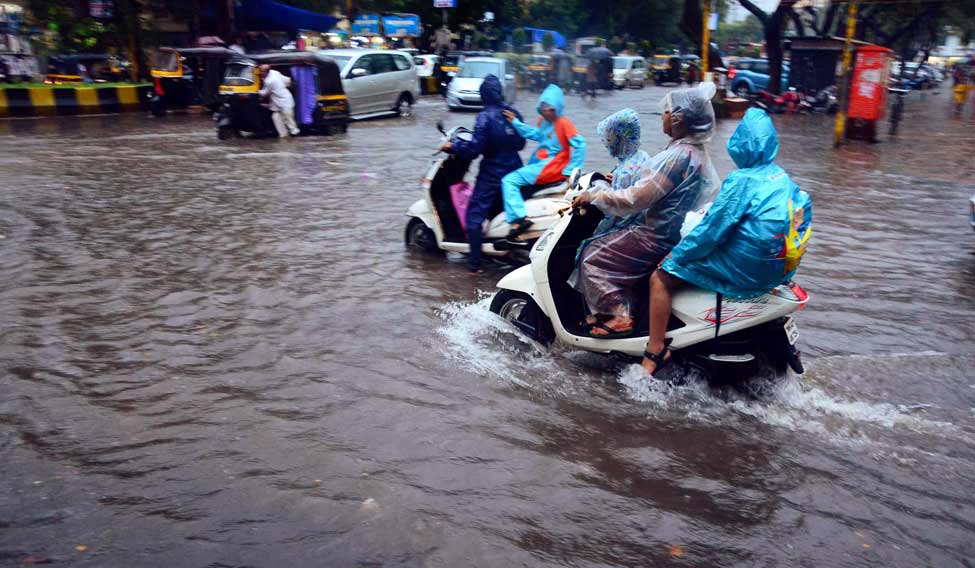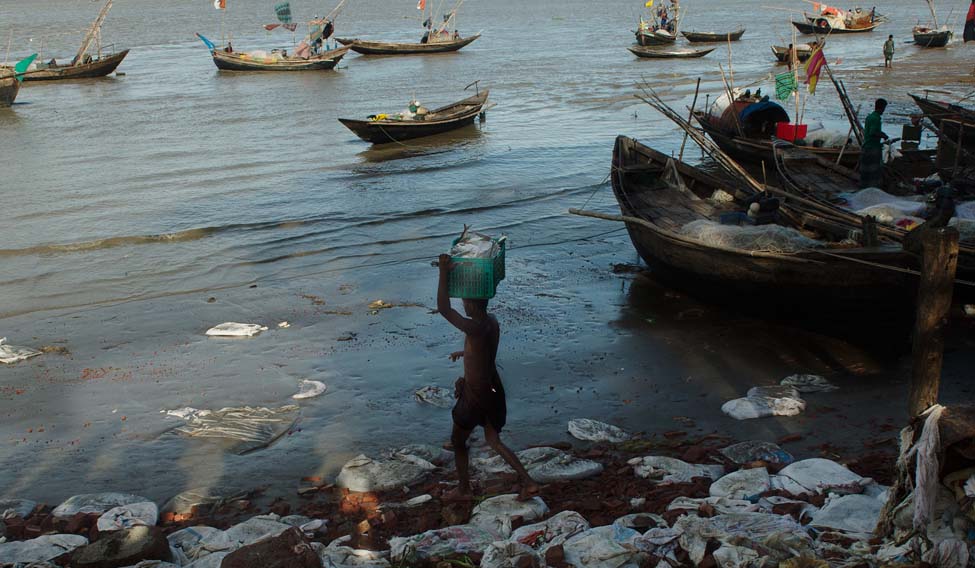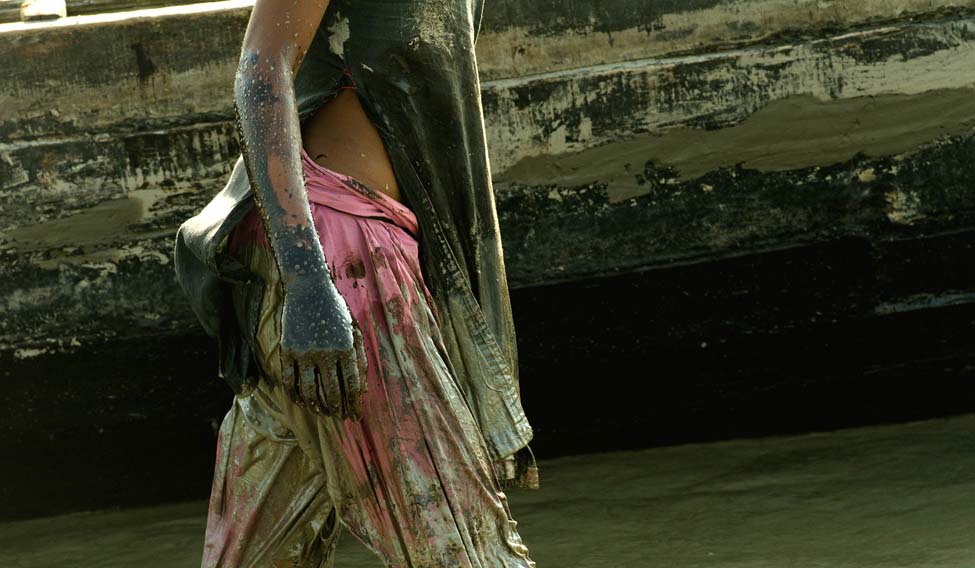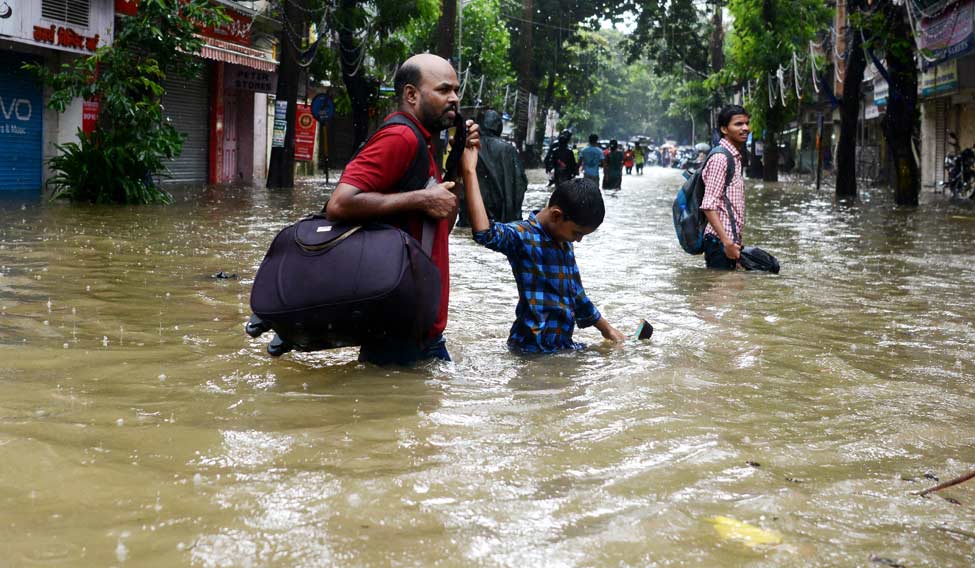In 1978, a tornado, the first of its kind, rocked New Delhi. As writer Amitav Ghosh penned, he—then a part-time journalist—was caught in the literal eye of the storm. As he describes in The Great Derangment, a work of non-fiction dealing with climate change, "In the dim glow that was shining down from above, I saw an extraordinary panoply of objects flying past — bicycles, scooters, lamp posts, sheets of corrugated iron, even entire tea stalls. In that instant, gravity itself seemed to have been transformed into a wheel spinning upon the fingertip of some unknown power."
If he was describing the unfathomable anger of nature with those lines, he would also go on to delve into the dangers of underestimating the deceiving calm of the Arabian Sea and the sorry state of disaster planning in such a high-risk, densely populated area like Mumbai. "In Mumbai, disaster planning seems to have been guided largely by concerns about events that occur with little or no warning, like earthquakes and deluges: evacuations usually follow rather than precede disasters of this kind. With a cyclone, given a lead-up period of several days, it would not be logistically impossible to evacuate large parts of the city before the storm’s arrival."
In the final week of August this year, he reiterated his warning once more, when Houston in the United States was submerged in a disastrous cyclone. (A little later came Hurricane Irma and the disaster that was wreaked in Florida).
S Mumbai esp is facing greater cyclone risk because of climate change. Evacuation & other resiliency plans urgently needed, to save lives.
— Amitav Ghosh (@GhoshAmitav) August 28, 2017
Houston wasn't evacuated because it wd have been a 'nightmare' to move 6.5 miln. Imagine evacuating Mumbai or Chennai, esp w/o proper plans.
— Amitav Ghosh (@GhoshAmitav) August 28, 2017
His warning was, by no means, an empty one. In 2017, floods ravaged states like Mumbai, Assam (which was later touted as the worst floods to hit the state in over 20 years), Gujarat—the intensity of the latter even threatening to unseat the ruling dispensation in the upcoming polls.
 (File) Rains in Mumbai | PTI
(File) Rains in Mumbai | PTI
Scientific reports are also increasingly pointing to the fact that climate change is not just a reality, but a harsh truth for the people in countries like India and its neighbours like Bangladesh. A recent report by scientists P.D.A. Kraaijenbrink, M.F.P. Bierkens, A.F. Lutz and W.W. Immerzeel has claimed that a global temperature rise of 1.5 °C will lead to a warming of 2.1 ± 0.1 °C in the high mountains of Asia (HMA), and that 64 ± 7 per cent of the present-day ice mass stored in the HMA glaciers will remain by the end of the century.
On the frontlines of that conflict are journalists (mostly photojournalists) who cover the effects of climate change from remote locations—which play silent witnesses to the worst form of ravages of the phenomenon.
Take the case of Arati Kumar Rao, who has been documenting the slow violence of ecological degradation and climate change on ecosystems and livelihoods along South Asia's rivers. She has chronicled the environmental degradation along the Sundarbans, and the untold stories of those who live along the banks of Brahmaputra. Arati will be criss-crossing the sub-continent working on her first book.
 (File) Arati Kumar Rao's documentation of environmental destruction | WITH PERMISSION FROM THE PHOTOGRAPHER
(File) Arati Kumar Rao's documentation of environmental destruction | WITH PERMISSION FROM THE PHOTOGRAPHER
She spoke to THE WEEK about her experiences:
We have started seeing the effects of climate change more often than not now--be it in Gujarat floods, Assam floods or even the Hurricane Irma. As a person who does extensive research from the ground, just how ignorant are we of the sufferings of millions whose stories remain untold?
 (File) Arati Kumar Rao's documentation of environmental destruction in Sundarbans | WITH PERMISSION FROM THE PHOTOGRAPHER
(File) Arati Kumar Rao's documentation of environmental destruction in Sundarbans | WITH PERMISSION FROM THE PHOTOGRAPHER
We must be careful for we cannot pin any single weather event on climate change. Rather, it is the intensifying in the frequency of such events and the larger pattern of extreme weather events that is attributed to climate change. The people living closest to the land, and living off the land—like farmers and fisherfolk—are the most affected because climate change exacerbates already existing inequities and bad land and water management. Not only in places like Bangladesh, but people are affected and losing their traditional livelihood in rural places everywhere. As long as mainstream media only focuses on the symptoms (like floods and droughts) and not on the underlying problems (how bad management, planning, and large infrastructure projects that are built against nature are affecting ecosystems and people), we will be stuck.
Moving on to the Rohingya issue. As Reuters reported, Bangladeshi fishermen are carting Rohingya from Myanmar—across the Naf river—to the safer zones of Bangladesh for (sometimes) exorbitant prices. You have documented the difficulties in earning a livelihood faced by the fishermen along Teesta river. Is the loss of livelihood a reason for their actions? We also know that the Naf river is prone to frequent floodings, wreaking havoc in both the Bangladeshi and the Rakhine sides. In such humanitarian crises across the world, just how much does environmental crises expedite the cause and the effects?
These people, the fishermen of Bangladesh, are desperately poor and deep in debt. It is this desperation that probably drives them to do what they do. Again, the issues here are complex, I do not have any first hand information and it is hard to make connections without knowing what the situation on ground is, what the motivations are, what the individual lives look like. Sure, it is immoral to fleece refugees for personal gain, but it is hard to stand in judgment when the life of the rescuer itself is far from comfortable.
Any experience that stayed with you, while covering the Sundarbans oil spill?
If I had to sum up what I came away with from the Sundarbans oil spill, I would do it in two words: governmental apathy. And this goes for both sides of the border. The Indian and Bangladeshi governments are backing a massive coal-fired power plant a few kilometers north of the Sundarbans. Shipping traffic, carrying hazardous cargo, is set to at least double through the fragile mangrove forest which is home to so many endangered species and natives who depend upon the forests for their livelihood. The largest mangrove forest in the world, which is also the first line of defense against rising seas and storm surges, is being threatened like never before. Governmental apathy and refusal to heed the warnings of eminent scientists is a dark foreboding of things to come. As they say, there are none so blind as those who refuse to see.
Another photojournalist with a bird's eye view of environmental destruction is Vlad Sokhin—an award winning documentary photographer, videographer and multimedia producer covering remote areas in Oceania and Africa. He has lived and worked in Russia, Portugal, Spain, Mozambique, Thailand and Australia. A chat with the photographer, busy with his latest assignment in Senegal:
You won an award for the Best Digital News Story at the Visa pour l’image photojournalism festival. You documented the lives of the inhabitants of Kamchatka Peninsula, a territory in Russia’s Far East. How was your experience? Do you think enogh media attention goes for the issues in remote areas?
No, there should have been more media attention. I travelled there to document the lives of the people who are facing grave threats due to global warming. There should be more reports from the ground.





